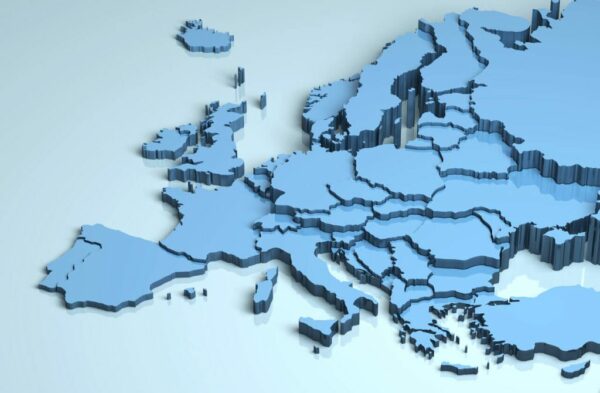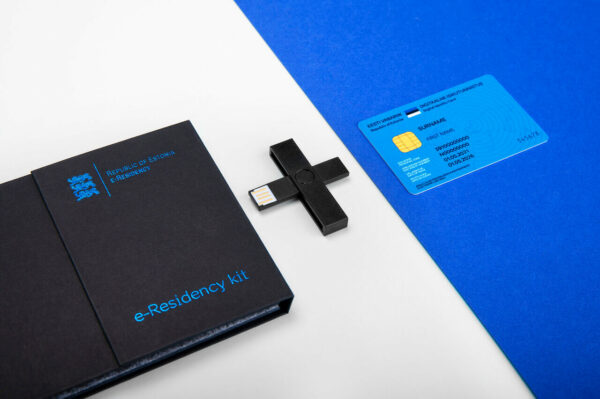
e-Residency
- |
No more digital garbage: real-time economy to streamline transactions and services
Justin Petrone
The year may be 2023, but even in digital-savvy Estonia, many entrepreneurs still do business as if it were 2008. Invoices are most often sent via email, typically in a PDF file, and just exchanging goods can result in mounds of messages and files, what some call digital garbage.
A new initiative led by the Estonian Ministry of Economic Affairs and Communications aims to change this status quo. It is called a real-time economy and supports a digital ecosystem where transactions occur in real time. Rather than sending emails or even relying on paper invoices, companies will exchange digital, structured, machine-readable data in standard formats. Such exchanges will occur automatically in the background, giving companies full assurance that the data will arrive seamlessly at the right place at the right time.
Rolemodel Finland
According to Sirli Heinsoo, head of the real-time economy at the Ministry of Economic Affairs and Communication, the effort to standardise business transactions has continued for some time. Inspired by similar efforts in Finland, Estonian companies began exploring the idea of creating a real-time economy ecosystem over a decade ago. In 2016, several firms received the first of several EU grants to investigate the issue. It soon became clear that the private sector could not implement a real-time economy ecosystem alone, and the state needed to be involved.
“What was needed was a fundamental change of thinking in the public sector and a focus on reducing the administrative burden on entrepreneurs to make their life easier,” noted Heinsoo. She said that while the public sector has strived to reduce the administrative burden of its institutions, it hadn’t been thinking about entrepreneurs enough.
Heinsoo joined the ministry at the end of 2019 to oversee the project, and in 2020, a vision for an Estonian real-time economy and a work plan was published. The overarching goal is to improve productivity by standardising and automating the way data is exchanged, both between companies, as well as with the state. Real-time data exchange solutions include e-invoices, e-receipts, data-driven reporting to the state, and other financial and non-financial data exchange mechanisms, such as e-waybills, created when goods are transported across national borders or digital product passports in the near future.
By shifting to fully digital transactions, participants in a real-time economy should become more efficient in operations and obtain a better understanding of their data, which could be used to improve future services too. Meanwhile, the state can carry out automated business reporting and use such high-quality data to compile detailed and more precise statistics, which could be used for better data-driven business decisions.
Towards standardised and shareable data
Electronic invoicing is a core component of a real-time economy. Estonia is moving to the European standard for e-invoices, making it easier to invoice clients in other EU countries. The state has also pitched in to support the adoption of e-invoicing by making grants available to entrepreneurs and organising workshops on e-invoicing. Electronic receipts are also important, and Estonia intends to adopt a new European e-receipt standard when it is completed later this year. The government will offer similar incentives, funding, and workshops to support the rollout of e-receipts, according to Heinsoo.

These puzzle pieces comprise a real-time economy, but the underlying goal is to have standardised, shareable data. “Right now, data just sits within a company’s financial software system,” remarked Heinsoo. “And it is not comprehensible to other systems,” she said. She added that when two companies collaborate at the moment, it often requires the work of several people who manually transcribe data from one system to make it compatible with another.
In the future, all of this data should be interoperable. Heinsoo said that products would also have something like a digital product passport that contains standardised information that is readable via a barcode or QR code. It might consist of what the product is, how much it weighs, or its carbon footprint. All this data would be readable and could be used to compile statistics.
Step by step
Heinsoo stressed that realising the real-time economy will take time. This year, the ministry is working with about 20 institutions to develop a taxonomy for data-based reporting to state institutions and is planning a support measure for the private sector so that they can submit reports in an automated manner. While some Estonian companies have been using e-invoices for years, the ministry will continue to support their adoption this year through grants and workshops, she said. Heinsoo added that e-invoices are the most important base for future data-driven and automated reporting and new value-added services built upon quality and standardised data.
She noted that real-time economy solutions could be used across borders, and international active cooperation is a daily practice in Estonia. For example, the ministry is also engaged in an international project involving Finland, Latvia, Lithuania, and Poland to create a tool to help entrepreneurs submit sustainability reporting, focusing on small and medium-sized enterprises. The effort involved 12 partners and commenced this year.
One additional initiative underway is the creation of a Know Your Customer (KYC) service to help companies expedite the lengthy and expensive process of business partner verification.
Mindset change
According to Heinsoo, private sector involvement in these endeavours is on the rise. Entrepreneurs are becoming more active in implementing a real-time economy as they see such changes benefiting their businesses.
“Today in Estonia, 90 per cent of bills in the private sector are sent as a PDF and by email,” said Ulvi Tallo, founder and CEO of Grow Finance, a Tallinn-based financial services company. “This is an old way of doing things that we need to get rid of,” she said. “It slows down the economy and creates a lot of unnecessary steps, and you don’t send just one email but several.”
Tallo said data would move seamlessly from system to system in a real-time economy. “One document will be sent,” she said, “instead of 10 emails.”
However, getting people to move to a real-time economy ecosystem will take more than just building the infrastructure, Tallo argued. People are used to sending PDFs, and it will take time to change their mentality. Electronic invoices, in contrast, often require some dialogue about how to send an e-invoice, plus exchanging the requisite information to make the transaction. As such, sending an e-invoice needs to be simpler than sending an email with an attachment, Tallo said.
“People will always choose what is more comfortable.”
Heinsoo added that people are suspicious of automated solutions and that scepticism must also be overcome, especially as the state does not intend to make such services obligatory. She said there needs to be a “very big change in mentality” to encourage the adoption of real-time economy solutions. The state would like people to view the changes positively and choose the most cost-efficient alternative by themselves.
Tallo also commented on the government’s support of a single KYC service, stating that her company spends a considerable amount of resources on data collection to prevent money laundering and that if such data collection was run via a single system, the process of verifying customers could be conducted much more efficiently.
Previously posted at :
RELATED NEWS


